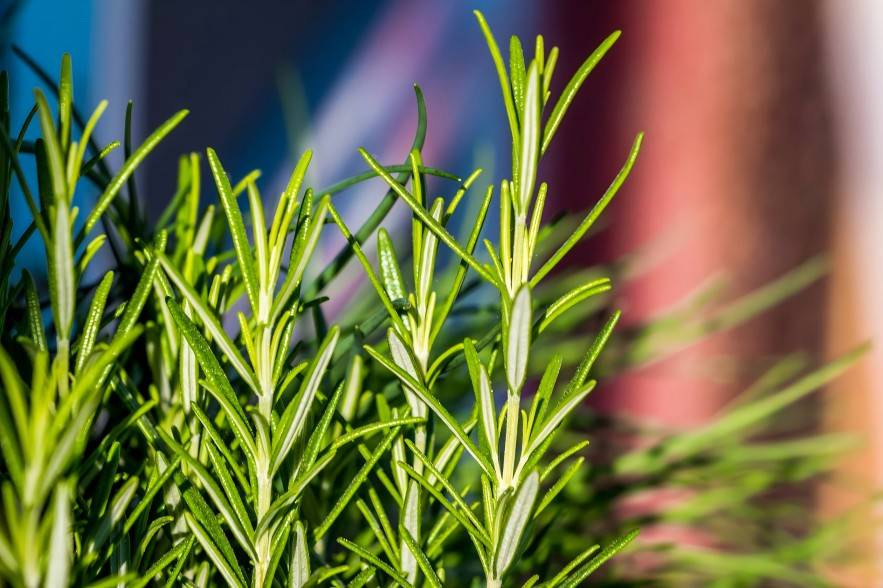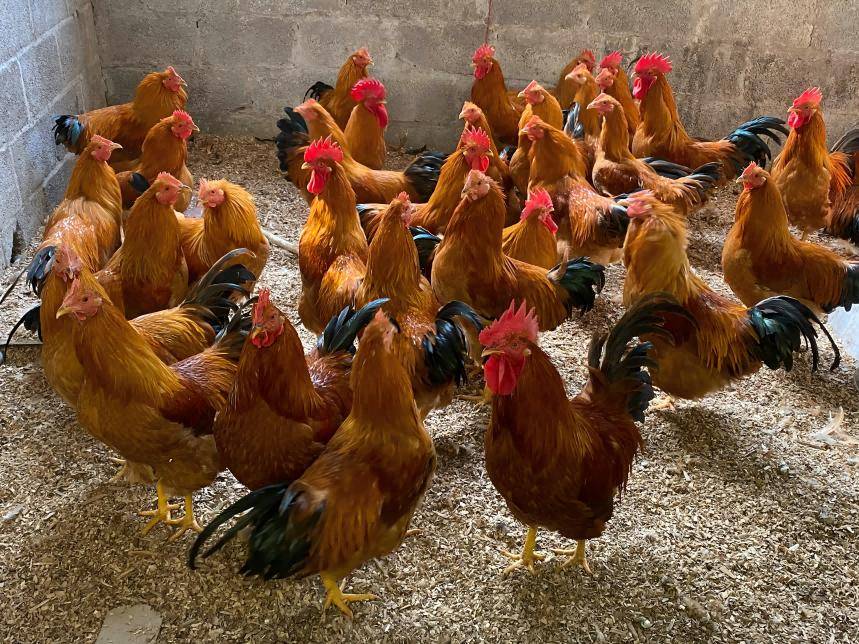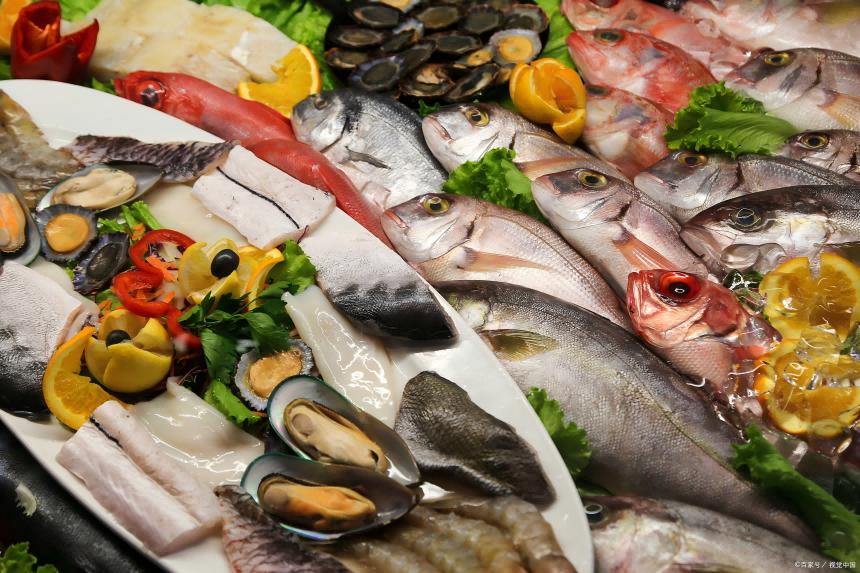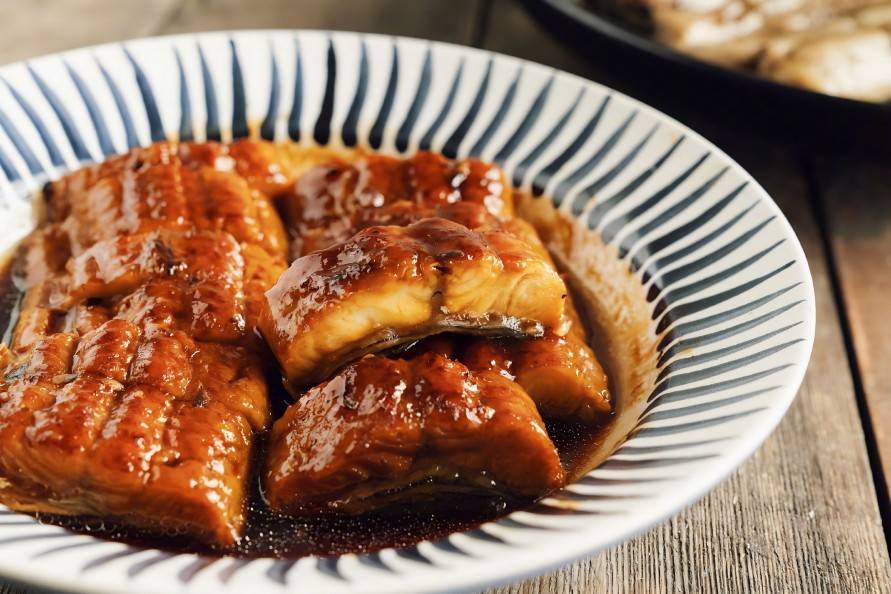ローズマリーエキス-天然の抗酸化物質
抗酸化物質は、食品に添加することで、食品中の油脂の自動酸化を防ぎ、遅滞させ、その安定性を高め、保存期間を延長させる物質で、食品産業の発展を促進する上で大きな役割を果たしている。現在、食品産業で広く使われている酸素化剤には天然の抗酸化剤と合成の抗酸化剤がある。光、温度、保管条件による肉や食肉製品の変色や変色は、主に脂肪やミオグロビンの酸化によるものです。脂肪の酸化は微生物によるものと多価不飽和脂肪酸の好気性酸化によるものがあります。これらの様々な酸化度は、食品の生産と貯蔵における最大の問題です。腐敗と腐敗に関連する危険を防ぐために、食品中の脂肪の酸化を抑制することが重要です。
現在、主な合成(食品工業用添加物)の酸化防止剤はBHA BHT、、において用いられる場合動物実験による超過て、拡大を引き起こす原因の可能性が脾臓をした動物や麹酸私はしたがって、の开発と利用すれば、企业の自然の主なスポットとして浮上の酸化防止剤研究分野食品業界です天然の抗酸化物質は、動物、植物、微生物の代謝物を原料として抽出して得られる天然物質です。安全性が高く、抗酸化作用が強く、副作用がなく、鮮度を保つという利点があります。

ローズマリーエキスは、植物rosmarinus officinalis lから抽出された天然物質であり、優れた抗酸化力とラジカル除去能力を有し、その抗酸化特性は、フェノール化合物だけのものよりも優れています[2]。その抗酸化特性は、フェノール化合物単独よりも優れています[2]。技術が発達し、価格が一般的な合成抗酸化剤とほぼ同じ水準まで下がり、開発の可能性が高い。本論文では、ローズマリー抽出物の抗酸化特性とその食肉産業への応用について体系的に説明し、食品中のローズマリー抽出物の検出機構を詳述し、その使用を標準化し、最終的には中国の食肉産業の発展を促進する。
1ローズマリーエキス
ローズマリーまた、海の露とも呼ばれ、ラビアトゥス科の植物である[3]。それは香りのある小さな常緑低木です。ローズマリーの茎と古い枝は円筒形で、暗灰色の皮質に不規則な縦裂片があり、若い枝は4角で、白い星状の毛で覆われている。葉は茎についているか、または固定されています;葉は長く、広く直線的で、上部は光沢があり、ほとんど無毛で、下は白色の星状披針形で覆われ、主脈は目立つ。花は対生で、粘性があり、短い枝先に集合し、総状花序を形成する。萼は卵形で、外側は白色の星状の腺と腺で、内側は無毛で覆われている[4]。ローズマリーは地中海沿岸地域が原産で、フランス、イタリア、スペイン、モロッコなどが主な栽培地で、その後ヨーロッパや米国にも導入された[5]。近年、雲南省、貴州省などで広く栽培されています。年末、北京植物園の植物学研究所の中国科学院のローズマリー(IBG)に海外から初めて成功栽培され、なった」とし、貴州省の今の独立礼山郡がのローズマリー生産主要基地[6 .7]。
ローズマリーには、モノテルペン、セスキテルペン、ジテルペン、トリテルペン、フラボノイド、脂肪酸、多分岐鎖、アミノ酸などの化学成分が含まれています。これまでに29種類のフラボノイド、クロスマムノールやカルノゾールなど12種類のジテルペンフェノール、3種類のジテルペンキノン、5種類のジテルペンとジテルペンキノンがローズマリの茎や葉から単離され、同定されている。ビスフェノールジテルペンは、油に溶け、ローズマリーに非常に有効な抗酸化物質です。ローズマリー抽出物の主な化学成分の構造を図1に示しますが、ローズマリー抽出物の主な抗酸化成分は、ロスマリックzcid(図1a)、ロスマノール(図1b)、カルノシン酸(図1c)、ジテルペンキノン(図1c)です。
(図1c)およびカルノゾール(図1d)は、その構造から抗酸化活性を示す[8 9。
テルペノイドはローズマリー中で最も豊富であるが、その化学組成は比較的複雑である。w . ioi pengは、コンピュータ検索技術を組み合わせて単離化合物の構造を同定し、各成分の相対的な割合を決定するためにクロマトグラフィーピーク領域正規化法を適用した。その結果、29種類の化学成分が同定され、その一部を表1に示す。
2ローズマリー抽出物の抽出方法
エッセンシャルオイルの伝統的な抽出方法は、溶剤抽出、水抽出、圧搾法、水蒸気蒸留、同時蒸留抽出法などがあります;新技術の抽出法には、マイクロ波による抽出法、超臨界co2抽出法、亜臨界水連続抽出法などがある[1]。 ローズマリー精油の主な抽出方法には、水蒸気蒸留、超臨界二酸化炭素抽出、分子蒸留、瞬時圧力降下、マイクロ波による抽出などがあります。wang chunyanら[12]は、超音波法を用いてエソからローズマリー酸を抽出し、抽出温度が抽出速度に最も大きく影響することを示した。ge hongshangらは[13]応答面法を用いて、エタノールの体積分率72.29%、材料/液体比1:1、および抽出物の温度という超音波抽出に最適な条件を求めた。 超音波抽出に最適なプロセス条件は、エタノールの体積比で72.29%、1:10.05 (m/v)および1:10.05 (m/v)でした。 最適条件は、エタノール体積72.29%、1:10.05 (m/v)、51.27分、200.0%超音波出力であった。27分、超音波パワー200.55w。最適な抽出条件では、スクラレオール酸とローズマリン酸の総収率は2.7%に達した。7%を记录。bi liangwuらは、平均11.93%の抽出率でscde法を用いてローズマリーから抗酸化物質を抽出した。平均抽出率は11.93%であった。
3肉製品におけるローズマリー抽出物の応用
3 .1家禽におけるローズマリー抽出物のアプリケーション
ローズマリーエキスhas antioxidant properties on egg yolks, and the degree of antioxidant activity was measured by malondialdehyde (MDA) content. It has been shown that the addition of dysentery herb or rosemary or turmeric to the diets of laying hens significantly reduced the values, therefore, it can be said that plant extracts can promote the oxidative stabilization of eggs when stored at room temperature of 16 ± 2°C [ 15 ]. Lambert RJ, Skandamis P N et al. have shown that the addition of rosemary or thyme leaves to diets can also increase chicken weights and improve feed returns.
赤痢、シナモン、パイパー、セージ、タイム、ローズマリーなどのlabiatae科の植物からのエッセンシャルオイルの添加は、ブロイラーの飼料消化性を向上させることができることが示されている7。yesilbag d, gezen s, sら。ローズマリーエッセンシャルオイルの高レベルが大幅に家禽の生存重量を増加させたことを示した,飼料摂取量と飼料転換率に差がない対照群と比較して,ローズマリーの高レベルが大幅に脂肪の酸化を制限すること[18i。Mathlouthi N、Boulzaienne T容疑者らに対するローズマリー精油の影響を慎重に検討する公演や抗菌活動鶏鶏はローズマリー精油めっきり减ったり死亡率伸び幅が農場の鶏は、mmで本体の質量が大きく抑制される腸内微生物人口や免疫力が高まるだけでなく[19]。yesilbag d、eren mannらは、ローズマリーがブロイラーの重量を有意に増加させるが、肉の色には有意な影響を及ぼさないことを示した[2]。

3 .2ローズマリー抽出物のミンチ肉製品への応用
Yin Yan et al. investigated the effects of different doses of rosemary extract on the fat oxidation resistance, bacteriostatic ability and quality characteristics of pork patties conditioned at 4℃. 将0 . 03%, 0.06%, and 0.6%. 0.03%, 0.06% and 0.09% of rosemary extract was used. 0.03%, 0.06% and 0.09% of rosemary extract were added to the seasoned pork patties, and the changes of thiobarbituric acid value, colony count, pH value, color (L", a*, b" values), yield and organoleptic indexes of the patties were determined during 10d of refrigeration. The results showed that the treatment groups with the addition of rosemary extract had significant anti-fat oxidation effects and yield [2].
高辉ら清めたrosemarinic酸加わった冷冻食品、isovacuumナトリウムに比べ抗酸化作用を検査した結果、過酸化値とTBA異なった」と冷冻食品の0.01% rosemarinic酸は相対的に低く、などがあった脂質peroxidationの緩和を図るという効果もある。その結果、ローズマリン酸0.01%を添加したハムソーセージの過酸化物値とtba値が相対的に低く、ハムソーセージの過酸化脂質が非常に良好に低下した。さらに、イソバクリル酸ナトリウムは、ロスマリン酸と一定の相乗作用を示すことが分かった[22]。
Jaina et al. compared different concentrations of rosemary extracts (0, 0 . 02%, 0.02%, 0.04% and 0.04%) of rosemary extract. 04% and 0.06%) in beef meatballs. 06%) in beef meatballs and 0.02% butylated hydroxyanisole (BHA) was used as control. The peroxide value (PV), thiobarbituric acid value (TBARS), color difference value (L " value, a " value), water retention and textural properties of the beef meatballs in the rosemary-treated and control groups were measured during the freezing and storage process with the use of 0.02% butylated hydroxyanisole (BHA) as the control, and the beef meatballs were also subjected to sensory evaluations, and it was found that the rosemary extract could significantly reduce the PV value and the TBARS value of the beef meatballs in the freezing process. It was found that rosemary extract could significantly reduce the Pv value and TBARS values (thiobarbituric acid reactive sulbstances, TBARs) of frozen beef meatballs, inhibit the fat oxidation of beef meatballs, and at the same time increase the a* value of beef meatballs to maintain a good color; the rosemary extract also reduced the cooking and defrosting losses of beef meatballs and improved the water retention of beef meatballs; and the qualitative and structural properties, such as hardness, elasticity, and chewing, were improved[23] . hardness and chewiness[23] .

Sebranek et al. compared the antioxidant effects of rosemary extract, BHA and BHT on pork sausage, and measured the thiobarbituric acid reactive substances (TBARs) and sensory color of pork sausage during storage, and conducted a sensory evaluation. The results showed that the antioxidant effect of rosemary extract was comparable to that of BHA and BHT when the amount of rosemary extract was added at 2,500 mg/L during the refrigerated period of pork sausage 24i. Jongberg et al. showed that green tea extract (500 mg/L of total phenolic compounds) and rosemary extract (400 mg/L of total phenolic compounds) were effective in inhibiting the increase of TBARs for fat oxidation and carbonyls for protein formation[25] . Nassu et al. found that 0.05% rosemary was effective in inhibiting the oxidation of lamb meat. Nassu et al. found that 0.05% rosemary was the best antioxidant for lamb sausage[26] . Riznar et al. showed that rosemary extract both slowed down the oxidation of chicken sausage during storage and inhibited the growth of aerobic bacteria[27] .
3 .3調理された肉や魚介類製品のさらなる処理におけるローズマリー抽出物のアプリケーション
Liao et al. sprayed rosemary, ポリフェノール and VE onto the surface of dry-marinated ham. After 4 months, the peroxide values of tea polyphenols, rosemary and VE were reduced by 21%, 51% and 23%, respectively, and the values of TBARs were reduced by 12%, 57% and 36%, respectively, as compared with those of the blank control, which indicated that the antioxidant effect of rosemary was the most effective, and the effect of color protection was obvious [28]. Jia Na et al. studied the color protection effect of three spice extracts, namely rosemary, clove and cinnamon, used alone and in combination, on soy sauce beef by measuring the PH value, redness value, color residue rate and sensory evaluation of soy sauce beef during storage. The results showed that the a* value, pigment residue rate and sensory scores of soy sauce beef were higher than those of the control group and the group of commercially available color protectors after color protection by a single spice extract, and the color protection effect of rosemary and cinnamon was the most significant [29]. Nissen et al. further demonstrated that the antioxidant property of rosemary extract added to cooked meat was better than that of grape skin, tea, and coffee extracts [30].
Doolaegeら実証されたことは猶予に拘ったローズマリーのエキス有効脂质代酸化ペート豚肉の肝臓の抗酸化力レベルや豚肉ペート肝臓の安定色は変わらず量が亜硝酸ナトリウム120 mg / kgに縮小され、80 mg / kg、ローズマリーの小[第i]を抽出ましょう。georgantelisらは、4°cでローズマリー抽出物とキトサンの抗酸化剤の組み合わせを添加したポークソーセージの抗菌作用と抗酸化作用が優れていることを示した[32]。fernandez-lopez33は、ローズマリー抽出物を用いて調理された豚肉のメトヘモグロビンの形成速度が遅れ、その結果、褐変が遅れ、保管中の肉の色の安定性が維持されることを示した。セイディムら34、モハメドら35の実験でも、ローズマリー抽出物が肉パテの微生物の増殖を抑制するのに有効であることが示された。tironi, tomasらは、マリンサーモンの肉にローズマリー抽出物を添加すると、脂肪の酸化速度が低下し、赤みの減少が抑制され、0.05%のローズマリー抽出物で魚の貯蔵期間が有意に増加したことを発見した。魚の蓄積期間0.05%非ローズマリーのエキスを広げに比べて3ヵ月近く空白制御グループ[Hul氏らは3李の大黄の魚でいローズマリーエキス*アミン・同時に数を大幅に減らし鱼人の中のある細菌をしこたまを持ち、酸化脂肪抑制し延命する大黄の8 ~ 10d37魚の便利な]。

4ローズマリー抽出物の測定
現在、作用机序企業リストラローズマリー関係と有効成分肉製品は限られた範囲で抽出して実験と隔離必要があるローズマリーの研究の抽出それぞれのコンポーネント、したがって、時間t1におけるローズマリーの分析と决意の最も基本的な和解の重要な一部だを抽出した。
The main analytical methods for the determination of rosemary extract include high performance liquid chromatography (HPLC), micellar electrokinetic chromatography (MEKC), ultraviolet (UV) spectroscopy, infrared (IR) spectroscopy, capillary electrophoresis (CE), gas chromatography (GC), mass spectrometry (MS), nuclear magnetic resonance spectroscopy (NMRS) and so on, while HPLC is the most widely used analytical method at present. High performance liquid chromatography (HPLC) is the most widely used analytical method in the analysis of rosemary extracts. For example, in the study of detection wavelength, Li-Qin Tang et al. used a detection wavelength of 220 nm for the determination of oleanolic acid and ursolic acid, while in some studies the detection wavelength of 230 nm was chosen for the simultaneous determination of rhamnosuspidic acid, rhamnetol, rhamnol, and epi-deltaic acid.38 - 4i. In a study on the analysis of rosemary extracts, Liang Zhenyi et al.42 used acetonitrile and methanol in the ratio of 8:15, v/v as the mobile phase. Erkan et al[43] analyzed the essential oil of rosemary with a mobile phase of water methanol 2 propanol 10:9:1. Among other assays, Tena et al[44] used GC, HPLC, IR, MS, 'ローズマリー抽出物の種類を決定するhnmr。
二宮ほか[45iによるローズマリー抽出物の組成決定],'hnmr、i3cnmrおよび質量分析法をシリカゲルカラムクロマトグラフィーで分析し、85% v/vメタノール溶液を添加した。ibaneらは、ce ms、hplc dad、hplc msを組み合わせてローズマリー抽出物を分析した[4']。pelillo et al.は、定量的方法を使用しました' hn-mr (ac 200 200 mhz) bruker分光計、aspect 3000ワークステーション、disr /90 nmr分析ソフトウェア、salvia divinorumの内容をテストし、salvia divinorumのnmrスペクトルを記録し、利用可能なnmrデータと比較した[47]。backlehら[48]は、ローズマリー抽出物の含有量を決定するためにgc ms法を用いた。さらに、dormanとescalanteら[49 - 5oi]は、アスコルビン酸などのローズマリー抽出物の色パラメータを定量的に比較し、その安定性を比較しました。
5結論
食品の安全は、ますます、消費者自己がますます留意グリーンまで、健全かつ天然の属性用品コンシューマー製品を选ぶ时は、性悪化をを防止することが必要に酸化による脂肪と油脂类の流通肉製品、および処理中微生物抵抗を強化する及び流通分野加工と流通の過程で肉製品の品質を安定させるという目標を達成するためには、外因性の抗酸化剤と防腐剤を添加する必要がある。処理および流通中の肉製品の品質を安定させるという目標を達成するためには、外因性の抗酸化物質および防腐剤の添加が不可欠です。しかし、消費や製品の品質に対する消費者の要求が高まる中、抗酸化や防腐効果のある天然添加物を選ぶのがトレンドになっている。
ローズマリー抽出物は、抗酸化と抗菌の特性を持つ抗酸化物質であり、非毒性で無害であることが広く証明されています。ローズマリーエキスを肉製品に添加することで、タンパク質や脂肪の酸化劣化を遅らせるだけでなく、製品の色や風味をある程度保護します。同时に、また、ローズマリーの適用から抽出したエキス食肉製品はそれほど大きくなさそうだが、その理由の一つは、抽出分離浄化作業ローズマリー未熟、高い、その価格と利用料金させる第二にローズマリーの分析有効成分エキス)が不足の構成要素との作用機構を発揮するものが明確でない。
Therefore, on the basis of expanding the application of rosemary extract in meat products、まず調査をさらに的に引き込まなければならローズマリーエキス分の実態を調査の抗菌抗酸化メカニズムとそのアプリケーション特性を持って各種の肉類そして研究する新しい技术の仕方についてて解剖すれば、実験とローズマリーエキスを孤立させる効果が大きいのでやっと目標を達成できる広く肉類また、ローズマリーから抽出したエキスを適用も健康補助食品・医療製品でさえもだまた、ローズマリー抽出物の特徴と新しいプロセス方法を研究し、より効果的に抽出物を分析、試験、浄化し、最終的な目標を達成するためにローズマリー抽出物を肉制品、さらには保健医療制品に使用する。
参照
1寸Hualin。食品産業における天然抗酸化茶ポリフェノールの応用への展望[j]。chemical intermediates (webzine), 2003, (1):24 25
2ウェルウッドc. r.コールr. a。 ローズマリーの選択にカルノシン酸濃度の関連性,rosmarinus offi-cinalis (l .)。,抗酸化収量の最適化のためのアクセッション。 2004年農食品化学Joulrnal、52 (20):6101 6107
3 liu j .純粋な天然インスタントローズマリーとその複合抗酸化物質の開発[d]。純粋な天然のインスタントローズマリーとその複合抗酸化物質の開発[d]。『中国伝統医学の研究』東京大学出版会、2012年。
4才春美、梁小媛。ローズマリーの薬理学[j]。^『仙台市史』仙台市史編纂委員会、2012年(平成24年)、65 - 66頁
5代目サンソン。ローズマリーの芳香植物[j]。 中国の花の園芸,2002,(21):10 - 17
6張晶、熊zhengying。天然抗酸化物質ローズマリーの研究とその応用[j]。現代の食品科学と技術、(1):135 - 137
7 liu xianzhang, zhao zhendong, bi liangwu et al。天然ローズマリーの抗酸化物質に関する研究の進展[j]。^ a b c d e f g h『日本の林業と農業』、2004年(平成16年)、132 - 138頁
香辛料エキスの抗酸化活性と作用機序[j]。香辛料エキスの抗酸化活性と作用機序[j]。^『官報』第1031号、大正10年(1915年)11月15日
九世景、王金美。天然抗酸化ローズマリーの動物性食品への応用[j]。^ a b c d e f g h i(2009年)、23 - 23頁
10鵬w。ローズマリーの精油と抗酸化物質の抽出過程に関する研究[d]。2012年-華南理工大学教授。
11趙h、張j s、李l h。植物精油抽出技術の進展[j]。2006, (4): 137 - 140
12 wang chunyan, liu aiwen, chen xin et al。超音波法によるエゴマからのローズマリン酸抽出条件に関する研究[j]。^「広東化学工業」。広東化学工業(2010年). 2011年11月11日閲覧
13葛hongshang, yao huanhuan, zhang rongrui et al。超音波補助ローズマリー・ラムノサス酸とローズマリー酸の同時抽出[j]。2012年(平成24年)3月5日:3 - 6丁目に移転
14 bi liangwu, zhao zhendong, li dongmei et al。総合抽出技術の研究抗酸化、精油らのカード(Ⅲ):作用があるとCO2を抽出か[J]超臨界です。林産物化学工業,2007,27(6):8 12
第15話・第15話・第15話に登場。植物抽出物の抗酸化作用と家禽生産への応用の進展[j]。 中国の畜産雑誌。1975年(昭和50年):73 - 76
16 lambert r . j ., skandamis p . n ., coote p . j ., et al。オレガノエッセンシャルオイル、チモール、カルバクロルの最小阻害濃度と作用機序の研究[j]。 ^「journal of applied microbiology, 2001, 91(3):453 462」。journal of applied microbiology(2001) . 2013年3月4日閲覧
17代当主。 , cocchi m ., bath h ., et al。ニワトリ胚の発生過程におけるα-コフェロールの吸収とポリアンサレート脂肪酸metabo- lism。[J]。 ^『官報』第834号、大正8年(1918年)4月8日
18 yesilbag d ., gezen s . s ., biricik h ., et al。ローズマリーとオレガノ揮発性油混合物の性能への影響、ファラオウズラ中の肉と血液学的パラメータの脂質酸化[j]。 2012年英科学家禽類、53 (1):89 - 9719
19 mathloulthi n ., bouzaienne t ., oueslati i ., et al.ローズマリーの使用,オレガノ,およびブロイラーチキンのエッセンシャルオイルの商業的ブレンド:in vitro抗菌活性および成長性能への影響。[J]。 ^ the journal of animal sci- ence, 2012, 90(3):813 - 823
20 yesilbag d ., eren m . n ., agel h . e ., et al。diの影響-彗星ローズマリー,ブロイラー性能にローズマリー揮発性オイルとビタミンe,肉のqulalityと血清sd活性。[J]。 2011年英科学家禽類、52 (4):472 482
21陰陽ヤン、張wangang、周広洪。冷凍味付けポークパテの品質に対するローズマリー抽出物の影響[j]。^ a b c d e f g h i(2014年)、287 - 292頁
22高輝、姚輝、呂孝齢。ハム・ソーセージに対するローズマリー酸の抗酸化作用[j]。2012年(平成24年)10月20日-移転
23甲娜、陳路、孔宝華。冷凍保存中の牛肉肉球の脂肪酸化および品質特性に対するローズマリー抽出物の影響[j]。^ a b c de f g h『科学技術史』第1巻、2015年、117頁
24 sebranek j . g ., sewalt v . j ., robbins k ., et al. com—天然ローズマリー抽出物のパリソンおよびポークソーセージにおけるrela−tive抗酸化作用のためのbha / bht [j]。 2005年肉sci - ence、69 (2):289 - 296
25 jongberg s ., torngren m . a ., gunvig a ., et al。ボローニャタイプの酸化ストレスを受けた豚肉から作られたソーセージのタンパク質酸化に対する緑茶またはローズマリー抽出物の影響。[J]。 肉科学,2013,93(3):538 - 546
26 nassu r . t., goncalves l. a ., silva m . a ., et al. oxi-異なるレベルの天然抗酸化物質を持つ発酵ヤギ肉のsaulsageの安定性。[j]。 2007年(平成19年)3月1日:1号線を廃止
27 riznar k ., celan s ., knez z ., et al。抗酸化物質と-チキンフランク中のローズマリー抽出物のtimicrobial活性- furters [j]。 journal of food science, 2006, 71 (7): c425 c429
28 liao chan, jin guofeng, zhang jianhao et al。ローズマリー、茶ポリフェノール、veが乾燥ハムの保存時の脂質酸化防止と色保護に及ぼす影響[j]。2008年食品業界科学技術、29 (8):82 - 86
29 jia na, sun qinxiu, li bowen et al。醤油牛肉に対する香辛料エキスの発色防止効果[j]。2014年発酵业、40 (6):193 - 198
30 nissen l. r ., byrne d . v ., bertelsen g ., et al。加熱された豚肉パティ中の植物抽出物のan—tioxidative活性は、記述的感覚プロファイリングおよび化学的肛門分解によって評価された。[J]。 肉の科学,2004,68(3):485 495
31 doolaege e . h ., vossen e ., raes k ., et al。赤化した亜硝酸塩肝パットにおける、脂質酸化、coloulr安定性およびtioxidant濃度に対するrose- maryエキスの用量の影響。[J]。
^ a b c d e f g h i、2012年(平成24年)9月29日、49 - 49頁
32 georgantelis d ., ambrosiadis i ., katikoul p ., et al。ローズマリー抽出物、キトサンとトコフェロールの微生物への影響- 4℃で保存されている新鮮な豚肉ソーセージの論理パラメータと脂質酸化[j]。 2007年(平成19年)1月1日:172 - 181
33 fernandez lopez j ., sevilla l .。 barbera e, et al。ヒソップ(hyssopu - sofficinalis l .)およびローズマリー(rosemarinuls officinalis l .)の抗酸化性前駆体の評価調理された豚肉のエキス[j]。 2003年誌『食品サイエンス68 (2):660 - 664
34 seydim a c, guzelseydim z . b ., acton j . c ., et al。真空包装された地上ダチョウ肉の品質に対するローズマリー抽出物および乳酸ナトリウムの影響[j]。 2006年(平成18年)1月1日- 1号機が完成
35モハメド・h・m・マンスール 機械的に骨を除去した鶏肉で製造されたビーフパットタイの配合にマジョラムとローズマリーのエッセンシャルオイルを取り入れ、脂質安定性と感覚特性を向上させました[j]。 2012年Lwtほとんど空な科学技術、45(1):79お前は良い奴で良いファイター
36ティロニv . a .トマスm . c。 ^ a b c d e f g h。 ら。品質の低下鮭(pseuldopercis semifasciata)の冷凍保存を妨げている。 ローズマリーの効果(rosmarinuls officinalis l .)[j]を抽出する。 2010年Lwt食品科学技術、43 (2):263 - 272
37 lit ., hu w ., li j ., et al.大型ニベ科魚(pseuldosciaena crocea)の貯蔵qulalityに対する茶ポリフェノールエキスおよびローズマリーエキスとキトサンを組み合わせたコーティング効果[j]。 ^ a b c d e f『官報』第1025号、大正12年(1921年)10月1日
38 tang li qin, liu sheng, li ch et al。高機能液体クロマトグラフィーによるビワ葉エキス中のオレアノル酸およびウルソル酸の定量[j]。中国の病院の薬局のジャーナル,2004,24(12):725 - 726
39歳、宋玉蘭。異なる収穫期におけるローズマリーのサルビアdivinorumの含有量に関する動的研究[j]。^「黒竜江省科学技術情報」。黒竜江省科学技術情報(2008). (30):148
40 huang memorial, tu pengfei, cai tongyi—ローズマリーからの抗酸化活性成分の超臨界co2流体抽出[j]。中国の漢方薬,2004,35(2):150 - 153
41岡村典子,藤本芳樹,桑原真二,et al。officinalisを用いたrosmarinus officinalisおよびsalにおけるカルノシン酸およびカルノゾールの高性能リクリドクロマトグラフィー測定[j]。 ^ a b c d e f g h i『仙台市史』第2巻、386 - 386頁
42ヤン・ジンイク、ファン・グァンミン、チャン・ダルら。逆相液体クロマトグラフィーによるローズマリー中ラムネチンの測定[j]。 2005年(平成17年)3月26日:205 - 205系統を廃止
43 erkan n ., ayranci g ., ayranci e ., et al。抗酸化剤ac-ローズマリーのtivities (rosmarinus officinalis l。 )抽出物、ブラックシード(nigella sativa l .)。エッセンシャルオイル、カルノシン酸、および他の抗酸化物質。 )エッセンシャルオイル、カルノシン酸、ロスマリン酸、セサモール[j]。 2008年(平成20年)1月1日- 1号機が完成
44 tena m . t ., valcarcel m ., hidalgo p ., et al. supercriti—cal fluid extraction of natulral antioxidants from rosemary: comparison with liquid solvent sonication [j]。 分析化学,1997,69(3):521 - 526
45 ninomiya k ., matsuda h ., shimoda h ., et al . - sage由来の新しいクラスの脂質吸収阻害剤カルノシン酸[j]。 Bioorganic &^『官報』第1414号、大正8年(1919年)4月14日
46 ibanez e ., cifuentes a ., crego a . l., et al.ローズマー- y (rosmarinuls officinalis l.)からの抗酸化物質の分析のための超臨界流体抽出、ミセル電気速度論的クロマトグラフィー、および逆相高性能液体クロマトグラフィーの併用。 [J]。 2000年Agriculltulral食品化学の雑誌48 (9):4060 4065
47 pelillo m ., cuvelier m . e ., biguzzi b ., et al.液体クロマトグラフィーを用いたダイオードアレイ検出によるポリフェノールのモル吸収率の計算:カルノジン酸の場合。[J]。 ^『仙台市史』通史編2、仙台市史2、225 - 229頁
48 backleh m ., leulpold g ., parlar h ., et al。ローズマリー(rosmari - nus officinalis l .)からのカルノシン酸を等電集配吸着バブルクロマトグラフィーにより迅速にクランティ法で濃縮。[J]。 農業・食品化学誌、2003年、51 (5):1297 1301
49 dorman h ., peltoketo a, hiltunen r ., et al. characterisa-選択されたlamiaceaeハーブからのde odourized aquleousエキスの抗酸化特性[j]。 ^「food chemis—try, 2003, 83(2):255—262」。food chemis(2003年). 2014年3月25日閲覧
50 sanchezescalante a ., djenane d ., torrescano g ., et al。修正された雰囲気で包装された牛肉パテの色および脂質安定性に対するアスコルビン酸、タウリン、カルノシンおよびローズメアリー粉末の影響[j]。 2001年(平成13年)肉科学58 (4):421 - 429


 英語
英語 フランス
フランス スペイン
スペイン ロシア
ロシア 韓国
韓国 日本
日本




